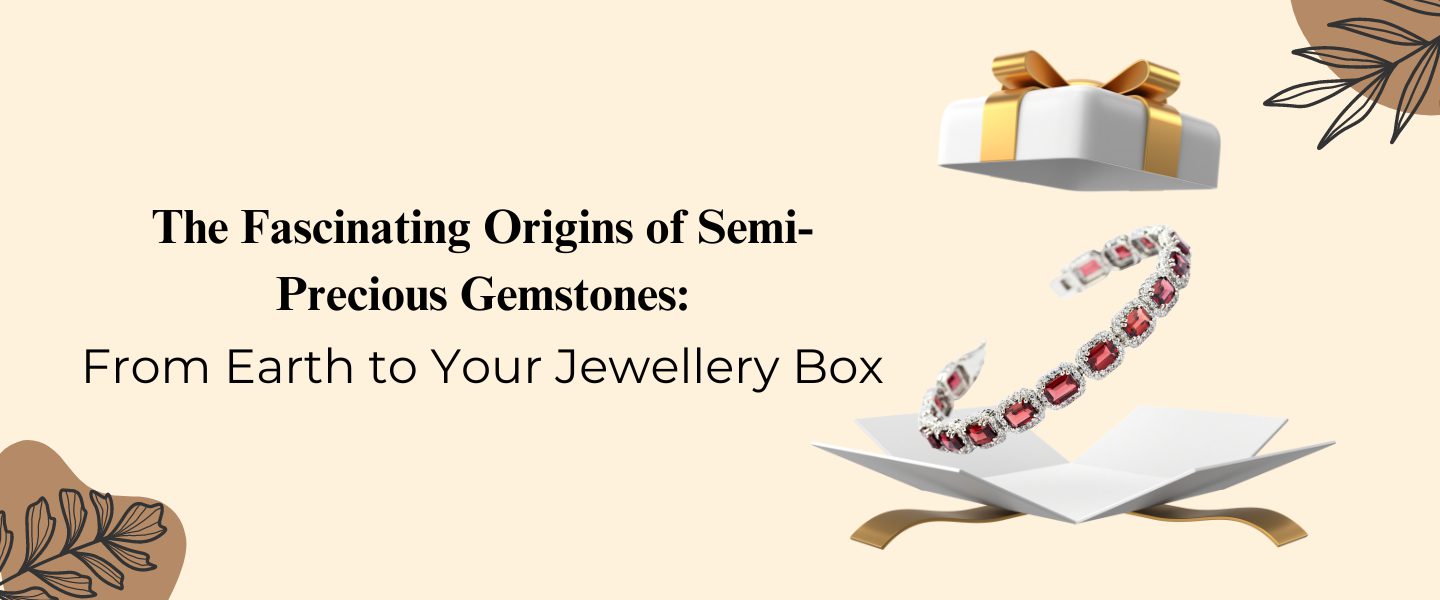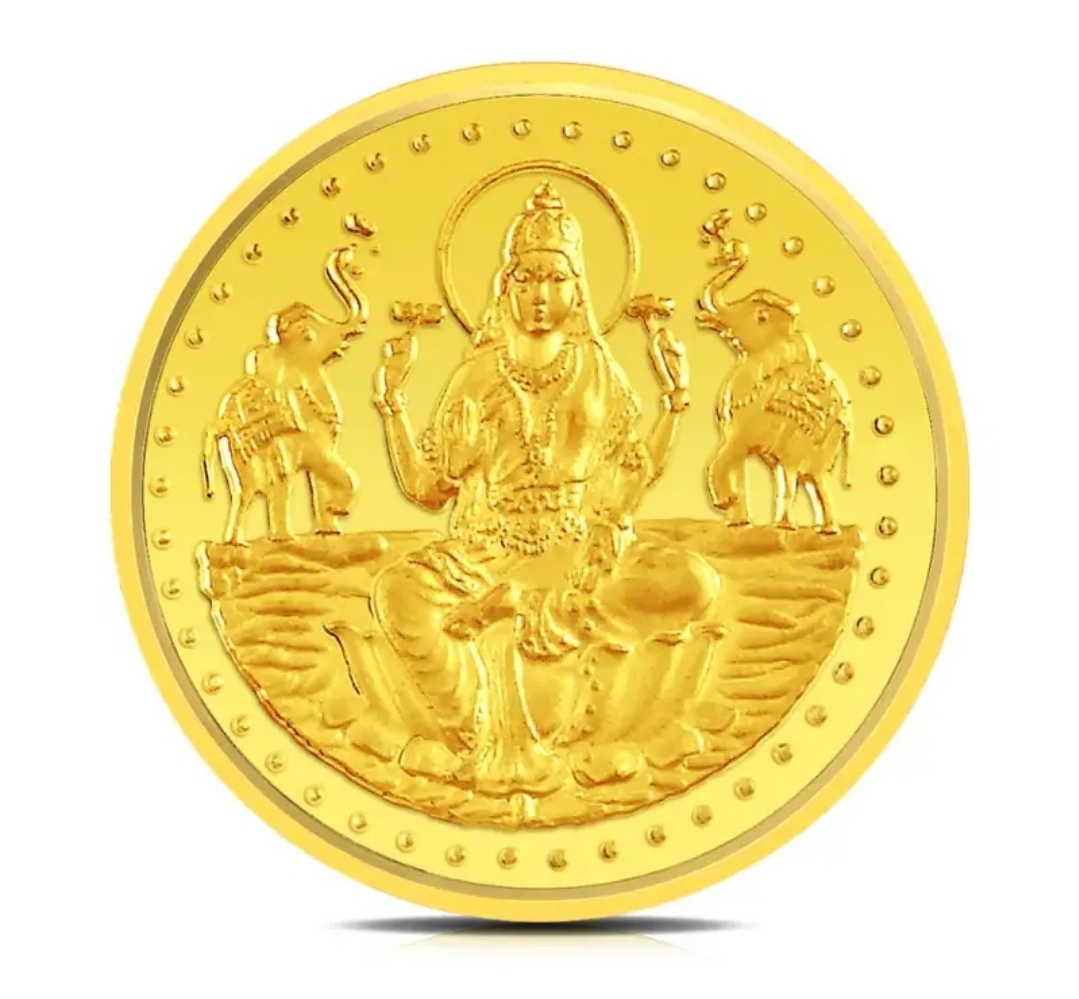Introduction
Every gemstone carries with it a story as old as time. From the depths of the Earth’s crust to the polished brilliance in your jewellery box, semi-precious gemstones have undergone an incredible journey. These stones have been shaped by natural forces, moulded by ancient processes, and transformed through the hands of skilled artisans to become the beautiful adornments we cherish today.
At Varnium by JMT, we celebrate the rich history and origins of each gemstone we use. In this blog post, we’ll take you on a journey through the fascinating origins of semi-precious gemstones, exploring their geological beginnings, cultural significance, and the meticulous processes that bring them to life as exquisite pieces of jewellery.
The Geological Birth of Semi-Precious Gemstones
The story of semi-precious gemstones begins deep within the Earth, where heat, pressure, and time work together to create these stunning natural treasures. Understanding the geological processes that form these stones adds a layer of appreciation to their beauty.
- Formation in the Earth’s Crust: Semi-precious gemstones are formed through a variety of geological processes, most commonly within the Earth’s crust, where conditions are just right for mineral formation. Here, molten rock, known as magma, cools and solidifies over millions of years, giving rise to crystals of various minerals. These minerals, subjected to different pressures and temperatures, eventually form the gemstones we know today.
- For example, amethyst, a variety of quartz, forms in geodes or cavities within volcanic rocks. Over time, silica-rich water seeps into these cavities, and under the right conditions, crystals of amethyst begin to grow. Similarly, turquoise forms in arid regions where groundwater percolates through rocks containing copper, aluminium, and phosphorus, leading to the formation of this iconic blue-green gemstone.
- Metamorphic Processes: Some gemstones are born out of metamorphic processes, where existing rocks are transformed by intense heat and pressure. For instance, garnets and jade are typically formed in metamorphic environments, where the combination of high temperature and pressure alters the minerals within the rock, creating new, more stable forms.
- Alluvial Deposits: In some cases, gemstones are not found in their original host rock but are instead discovered in alluvial deposits. These are areas where rivers or streams have eroded rocks over time, carrying loose gemstones downstream and depositing them in riverbeds or along shorelines. Stones like garnet and peridot are often mined from these alluvial deposits.
The Ancient History and Cultural Significance of Gemstones
Long before they adorned modern jewellery, gemstones held significant cultural, spiritual, and economic value across various ancient civilizations. Each culture had its own beliefs, legends, and uses for these stones, making them more than just decorative objects.
- Egyptian Civilization: Ancient Egyptians were among the first to use gemstones in jewellery and religious artefacts. Stones like lapis lazuli, carnelian, and turquoise were highly prized and believed to possess protective and healing powers. Lapis lazuli, with its deep blue hue, was especially revered, often associated with the heavens and used in the tombs of pharaohs.
- Mesopotamian Culture: In Mesopotamia, one of the earliest civilizations, gemstones were used in seals, amulets, and jewellery. Agate and jasper were commonly used, and their inclusion in seals was believed to offer protection and power to their owners. The craftsmanship of these ancient gem cutters laid the foundation for the gemstone industry as we know it today.
- Greek and Roman Empires: The Greeks and Romans took gemstone appreciation to new heights, with gemstones symbolising power, status, and wealth. Amethyst, for example, was believed to prevent drunkenness and was often worn in rings or carved into drinking vessels. The Romans also popularised the use of engraved gemstones, known as cameos and intaglios, which were used as personal seals or worn as jewellery.
- Indian Subcontinent: In India, gemstones have always played a vital role in both spiritual and material life. Stones like garnet, turquoise, and moonstone were not only used in ornate jewellery but also held astrological significance, believed to influence the wearer’s fate. India’s rich history of gemstone mining and trading made it a global hub for these precious stones, a legacy that continues to this day.
From Mines to Markets: The Journey of a Gemstone
Once gemstones are formed, the journey from the depths of the Earth to the jewellery market involves several crucial steps, each adding value and transforming the raw stone into a beautiful piece of jewellery.
- Mining and Extraction: The first step in a gemstone’s journey is extraction. Mining techniques vary depending on the type and location of the gemstone deposit. In some cases, gemstones are mined from hard rock deposits deep underground, while in others, they are collected from alluvial deposits using more straightforward, surface-level methods.
- For example, turquoise is often mined from shallow, surface-level deposits, while garnet may be extracted from deep underground mines. In some regions, traditional mining methods are still used, involving careful excavation by hand to avoid damaging the stones. In other areas, modern machinery and technology have made the process faster and more efficient.
- Sorting and Grading: After extraction, rough gemstones are sorted and graded based on factors such as colour, clarity, size, and overall quality. This grading process is crucial, as it determines the stone’s value and potential use in jewellery. Skilled gemologists examine each stone carefully, categorising it according to industry standards.
- Higher-quality stones are set aside for cutting and polishing, while lower-grade stones may be used in less expensive jewellery or for industrial purposes. This grading process is meticulous, ensuring that only the finest stones make it to the market.
- Cutting and Polishing: The next step in the gemstone’s journey is cutting and polishing. This process transforms the rough stone into a faceted gem that maximises its natural beauty. The art of gem cutting requires precision, skill, and an understanding of the stone’s properties, including its hardness, cleavage, and refractive index.
- Gem cutters use various techniques to shape and facet the stone, creating a balanced and symmetrical gem that reflects light beautifully. The final polish brings out the stone’s lustre, enhancing its colour and brilliance. Each cut is chosen to highlight the gemstone’s natural characteristics, whether it be a classic round cut, a sophisticated emerald cut, or a unique cabochon.
- Setting and Design: Once the gemstone is cut and polished, it is ready to be set into jewellery. This process involves designing a setting that complements and secures the stone, whether it be in a ring, necklace, bracelet, or earrings. At Varnium by JMT, we take great pride in crafting designs that not only showcase the gemstone’s beauty but also reflect the wearer’s personality and style.
- The design process is a blend of artistry and engineering, ensuring that the stone is both aesthetically pleasing and securely held in place. The setting may be simple and understated, allowing the gemstone to take centre stage, or it may be elaborate and intricate, adding layers of detail to the piece.
The Modern Gemstone Industry: Ethical Sourcing and Sustainability
Today, the gemstone industry faces new challenges and opportunities, particularly in the areas of ethical sourcing and sustainability. Consumers are increasingly aware of the environmental and social impacts of gemstone mining, and brands like Varnium by JMT are committed to responsible practices.
- Ethical Mining Practices: Ethical mining involves ensuring that gemstones are extracted in a manner that is environmentally sustainable and socially responsible. This includes fair labour practices, minimising environmental damage, and supporting the communities involved in the mining process.
- At Varnium by JMT, we prioritise working with suppliers who adhere to ethical mining practices, ensuring that our gemstones are not only beautiful but also sourced responsibly. This commitment extends to transparency in our supply chain, allowing our customers to make informed choices about the jewellery they purchase.
- Sustainability in Gemstone Processing: In addition to ethical mining, sustainability in gemstone processing is also crucial. This involves reducing waste, conserving water, and minimising the carbon footprint of gemstone cutting and polishing. Advances in technology have made it possible to process gemstones more efficiently, reducing the environmental impact of this stage of production.
- Recycled and upcycled gemstones are also becoming more popular, offering an eco-friendly alternative to newly mined stones. By reusing and repurposing gemstones, we can reduce the demand for new mining and contribute to a more sustainable industry.
- Supporting Local Artisans: The gemstone industry also provides opportunities to support local artisans and traditional craftsmanship. By partnering with artisans who use traditional techniques passed down through generations, we can preserve cultural heritage while creating unique, handcrafted pieces.
- At Varnium by JMT, we collaborate with skilled artisans who bring their expertise to every piece of jewellery we create. This not only ensures the highest quality craftsmanship but also supports local economies and communities.
From Earth to Your Jewellery Box: The Final Transformation
The journey of a gemstone from the Earth to your jewellery box is a remarkable one, filled with natural wonders, ancient traditions, and modern innovations. Each gemstone carries with it a story of geological transformation, cultural significance, and human artistry.
- Personal Connection: When you wear a piece of gemstone jewellery from Varnium by JMT, you’re not just wearing a beautiful accessory—you’re connecting with a piece of Earth’s history. Whether it’s the deep blue of lapis lazuli or the vibrant green of turquoise, each gemstone tells a story that spans millions of years.
- This connection to the natural world and to ancient cultures adds a layer of meaning to your jewellery, making it more than just a decorative piece. It becomes a symbol of the Earth’s beauty and the timeless craftsmanship that brings it to life.
- Celebrating Uniqueness: No two gemstones are exactly alike, and this uniqueness is one of the reasons why they are so cherished. The individual characteristics of each stone, from its colour to its inclusions, make it a one-of-a-kind piece. At Varnium by JMT, we celebrate this uniqueness, offering jewellery that is as distinctive as the person who wears it.
- A Timeless Legacy: Gemstone jewellery is often passed down through generations, becoming a family heirloom that carries stories and memories. By caring for your gemstones and choosing pieces that reflect your personal style, you’re creating a legacy that can be cherished for years to come.
Conclusion: The Everlasting Allure of Gemstones
The journey of semi-precious gemstones from the Earth to your jewellery box is a testament to the wonders of nature and the skill of human craftsmanship. At Varnium by JMT, we honour this journey by creating jewellery that not only showcases the beauty of these stones but also respects their origins and the people who bring them to life.
Whether you’re drawn to gemstones for their colour, history, or symbolism, understanding their origins deepens your connection to these natural wonders. As you wear your gemstone jewellery, you carry with you a piece of Earth’s story, a symbol of the beauty and power that lies within our planet.
At Varnium by JMT, we invite you to explore our collection of semi-precious gemstone jewellery, each piece thoughtfully designed to honour the stone’s journey from the Earth to your hands. Let your jewellery be a reflection of the Earth’s timeless beauty and your unique style.


